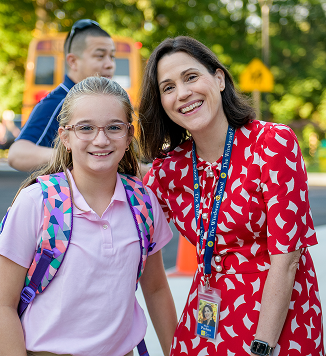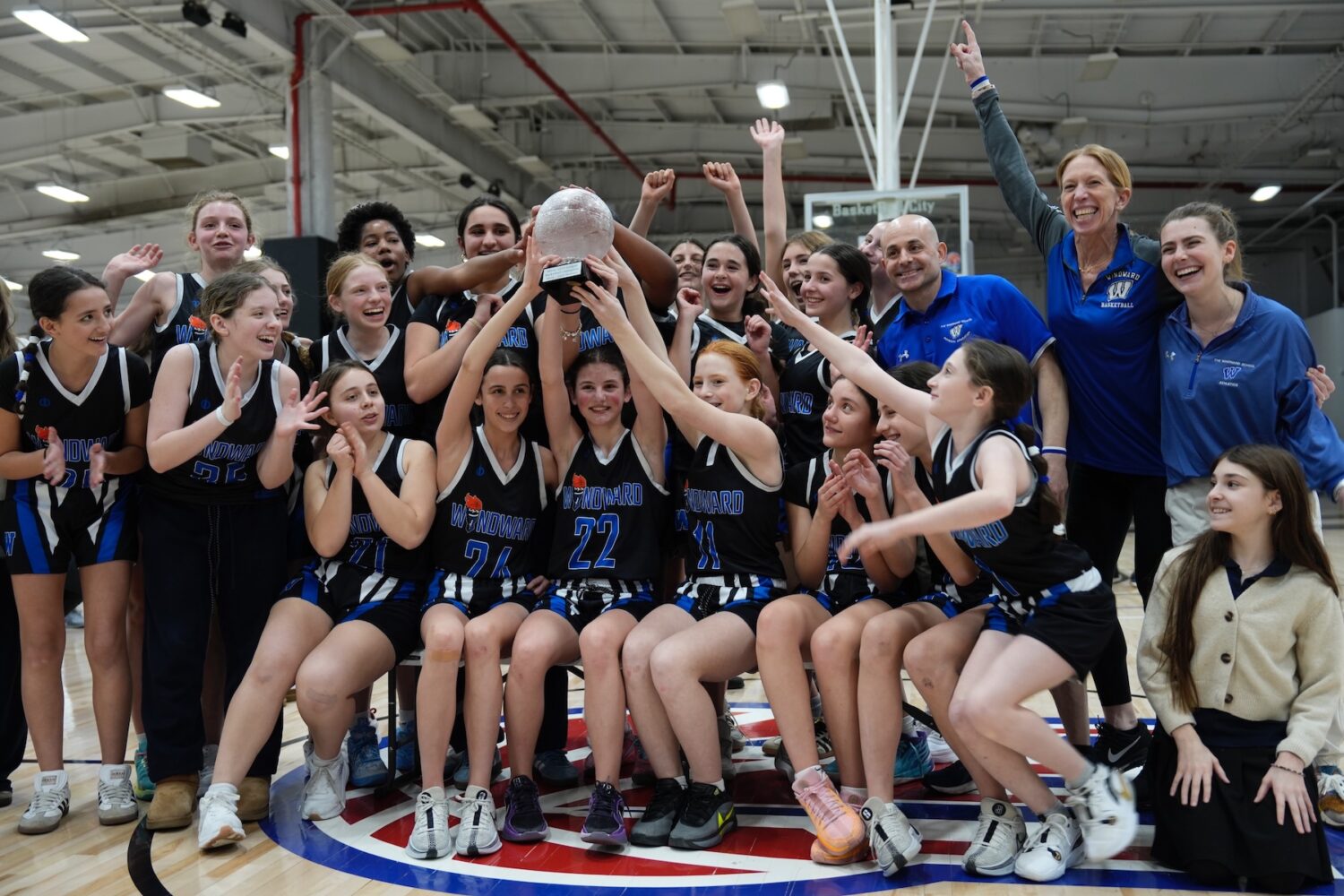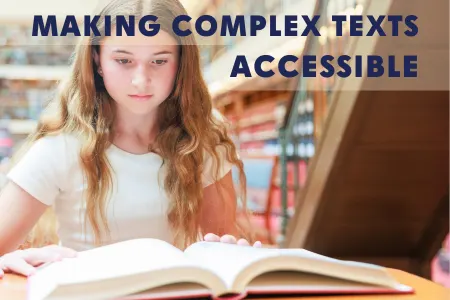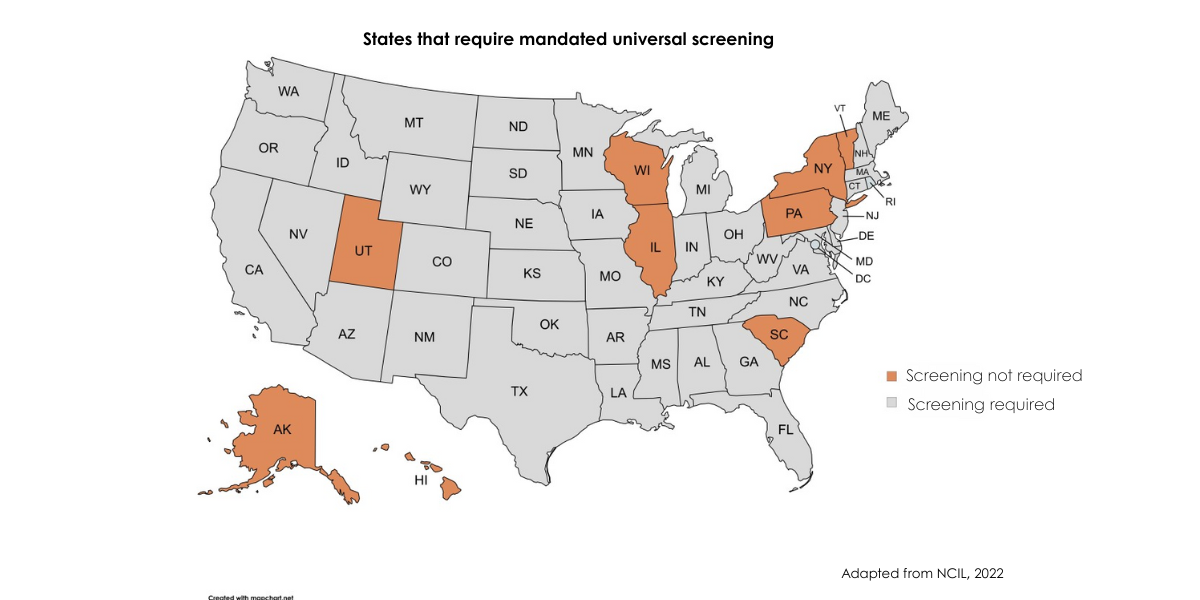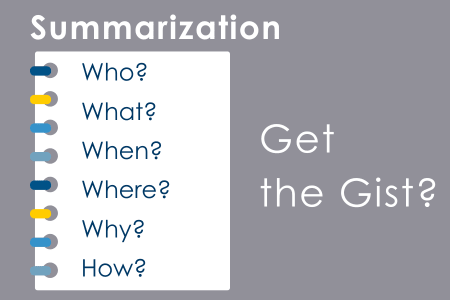In today’s classrooms, students are expected to engage with increasingly complex texts across all subjects. While many students struggle to meet this expectation due to variations in background knowledge, vocabulary, and reading proficiency, teachers have the power to set all students up for success. Through intentional instructional practices and a 5P Framework, educators can provide the scaffolding students need to navigate challenging texts successfully.
To build a foundation for college and career readiness, students must read widely and deeply from among a broad range of high-quality, increasingly challenging literary and informational texts. (Common Core State Standards, 2010, p.10)
Preparing to Read: The 5P Framework
1. Pair With Other Sources
Having students engage with text sets from diverse sources can support decoding, enhance reading comprehension, build vocabulary, and promote knowledge building across content areas (Fisher et al., 2016). Text sets include varied print materials—such as read-alouds, informational texts, and fact sheets—that support a target text’s key concepts while exposing students to essential vocabulary. In addition to text-based sources, videos, speeches, podcasts, photographs, and other images can bring content to life, support sustained learning on a topic, and provide repeated exposures to essential vocabulary. Multiple exposures and contextualization through various modalities can all help make reading and comprehending a target text more accessible (Lupo et al., 2017).
2. Preview and Prepare for Reading
Jumping into a complex text without preparation can leave students feeling lost. A simple but effective strategy is to preview the text before reading, which gives students a roadmap for what’s ahead. By scanning titles, words in bold, images, and charts, students activate their background knowledge and make predictions about what they will learn (Fisher & Frey, 2015).
Teachers can guide students through this process by encouraging them to
- read headings and subheadings to get a sense of the text’s content and structure.
- examine images, maps, charts, and graphs to identify important information.
- look for highlighted words and vocabulary pull-out boxes to anticipate key terms.
3. Activate Prior Knowledge
We all make sense of new information by connecting it to what we already know. Prior knowledge significantly enhances students’ understanding of a text (NRP, 2000; Pearson et al., 2020). When students activate their prior knowledge, they process and retain new information more effectively. Teachers can help students do this by incorporating activities like
- reviewing previous lessons to create connections between past and new content.
- using anticipation guides that prompt students to reflect on what they already know.
- conducting pre-reading text walks to familiarize students with key elements of the text.
- brainstorming and organizing existing knowledge using graphic organizers and semantic maps (Lewis et al., 2014).
4. Establish a Purpose for Reading
“Why are we reading this?” It’s a simple but essential question. Motivated readers have a clear purpose for reading. Whether they are learning new information, following a process, or analyzing a character’s problem-solving strategies, understanding the purpose behind reading increases engagement with text, which in turn enhances comprehension. When students have a reason to read, they are more likely to engage with the text on a deeper level (Shanahan et al., 2012).
Teachers can set a purpose for reading by
- clearly defining lesson objectives.
- using essential questions to frame the reading task.
- creating opportunities for students to make real-world connections (Fisher et al., 2016).
5. Pre-Teach Essential Vocabulary and Knowledge
Nothing frustrates students more than encountering a text filled with unfamiliar words. While vocabulary naturally grows through reading, explicit instruction in key terms can make complex texts much more approachable (National Reading Panel, 2000). Directly teaching the meanings of words that students will encounter in a text has been shown to significantly improve their ability to integrate these words into their understanding of the passage. Even minimal instruction—such as providing a brief explanation of a word’s meaning before reading—has been found to enhance comprehension (Wright & Cervetti, 2017).
To pre-teach vocabulary effectively,
- show students the word and have them say it aloud.
- provide a student-friendly definition.
- explain how the word relates to the lesson.
- model using the word in one or more sentences.
- use visuals to support understanding.
- highlight relevant morphological components or syllabication patterns.
- connect to cognates for English learners.
- confirm understanding.
Revisiting vocabulary during and after reading helps to assess student understanding, reinforce word knowledge, and promote retention. Highlight the use of the word within the text while reading, model its use with precise instructional language, and prompt students to practice using the words in their oral and written responses.
The 5P Framework offers a structured approach to help students navigate complex texts more effectively. By integrating these strategies into daily instruction, educators can equip students with the tools they need to read and comprehend challenging material with increasing independence, fostering success across all content areas.
References
Eunice Kennedy Shriver National Institute of Child Health and Human Development, NIH, DHHS. (2000). Report of the National Reading Panel: Teaching Children to Read: Reports of the Subgroups (Reference Only) (00-4754). Washington, DC: U.S. Government Printing Office.
Fisher, D., & Frey, N. (2015). Selecting texts and tasks for content area reading and learning. The Reading Teacher, 68(7), 524-529, doi.org/10.1002/trtr.1344.
Fisher, D., Frey, N., & Lapp, D. (2016). Text complexity: Stretching readers with texts and tasks. Corwin Press.
Lewis, W.E., Walpole, S., & McKenna, M.C. (2014). Cracking the common core: Choosing and using texts in grades 6–12. New York, NY: Guilford.
Lupo, S., Strong, J., Lewis, W., Walpole, S., & McKenna, M. (2017). Building background knowledge through reading: Rethinking text sets, Journal of Adolescent & Adult Literacy, 1-12, doi.org/10.1002/jaal.701.
Pearson, P. D., Palincsar, A. S., Biancarosa, G., & Berman, A. I. (2020). Reaping the rewards of the reading for understanding initiative. Washington, DC: National Academy of Education, doi.org/10.31094/2020/2.
Shanahan, T., Fisher, D., & Frey, N. (2012). The challenge of challenging text, Educational Leadership, 69(6), 58-62.
Wright, T. S., & Cervetti, G. N. (2017). A systematic review of vocabulary research with implications for instruction. Reading Research Quarterly, 52(3), 203-226, doi.org/10.1002/rrq.163.

